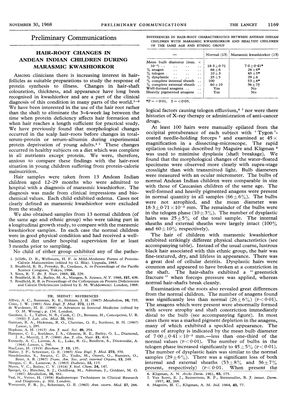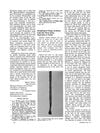HAIR-ROOT CHANGES IN ANDEAN INDIAN CHILDREN DURING MARASMIC KWASHIORKOR
November 1968
in “
The Lancet
”

TLDR Malnourished Andean Indian children had abnormal hair roots compared to healthy children.
In 1968, a study involving 13 Andean Indian children with marasmic kwashiorkor, aged 12-29 months, revealed significant differences in hair-root morphology compared to 13 healthy peers. The malnourished children had smaller mean bulb diameters (7.00 ± 0.41 × 10^-2 mm versus 18.3 ± 0.71 × 10^-2 mm in healthy children), a higher percentage of hair in the telogen phase (45 ± 5% compared to 10 ± 3%), and a lower percentage in the anagen phase (26 ± 6% versus 66 ± 6%). Their hair also showed more dysplasia and significant sheath loss. These results indicate that hair-root morphology could serve as a diagnostic tool for assessing nutritional status in children. The research received funding from the Rockefeller Foundation, the Center for Latin American Studies at the University of California, Berkeley, and NIH-AM-09980.
